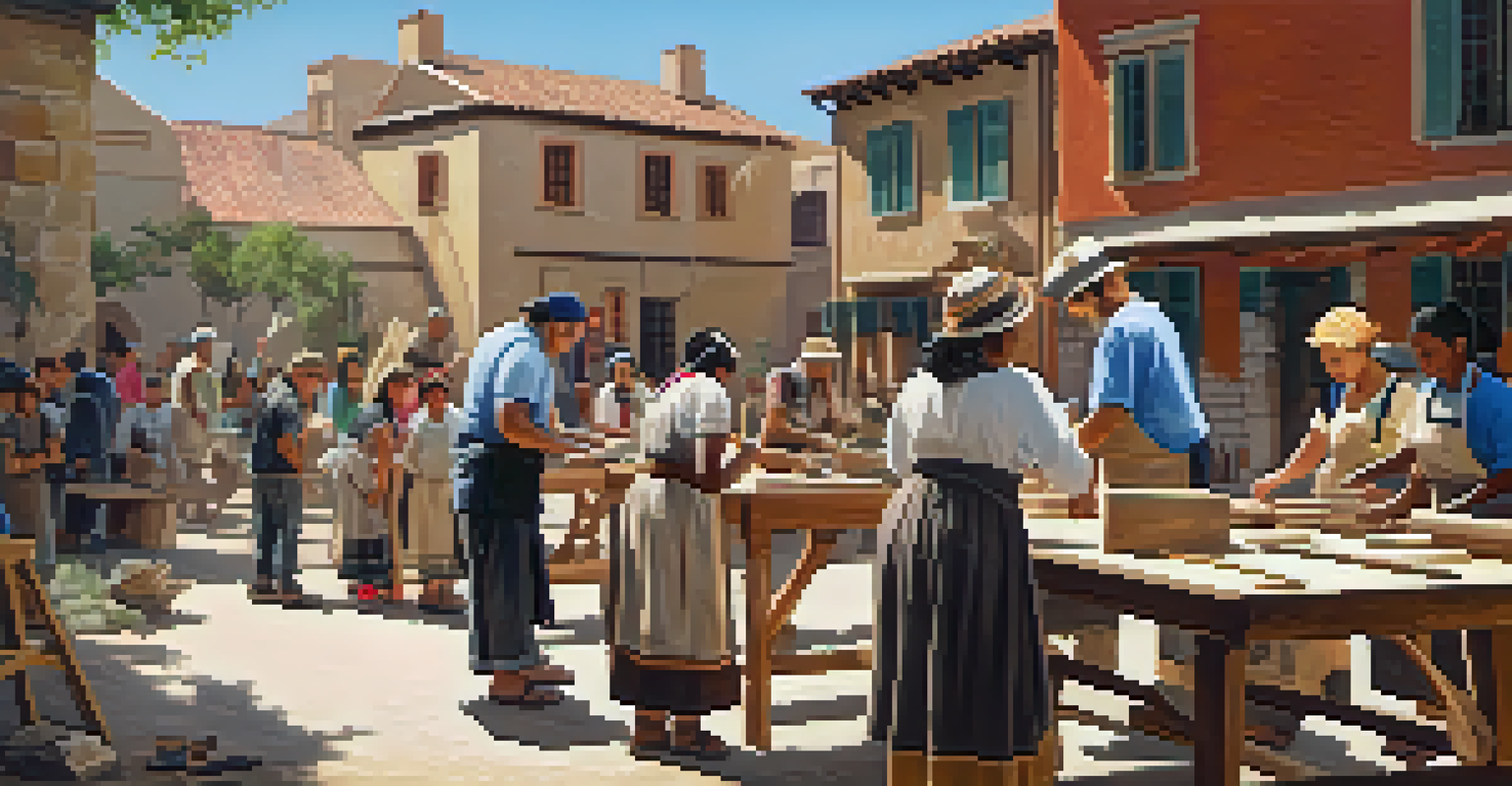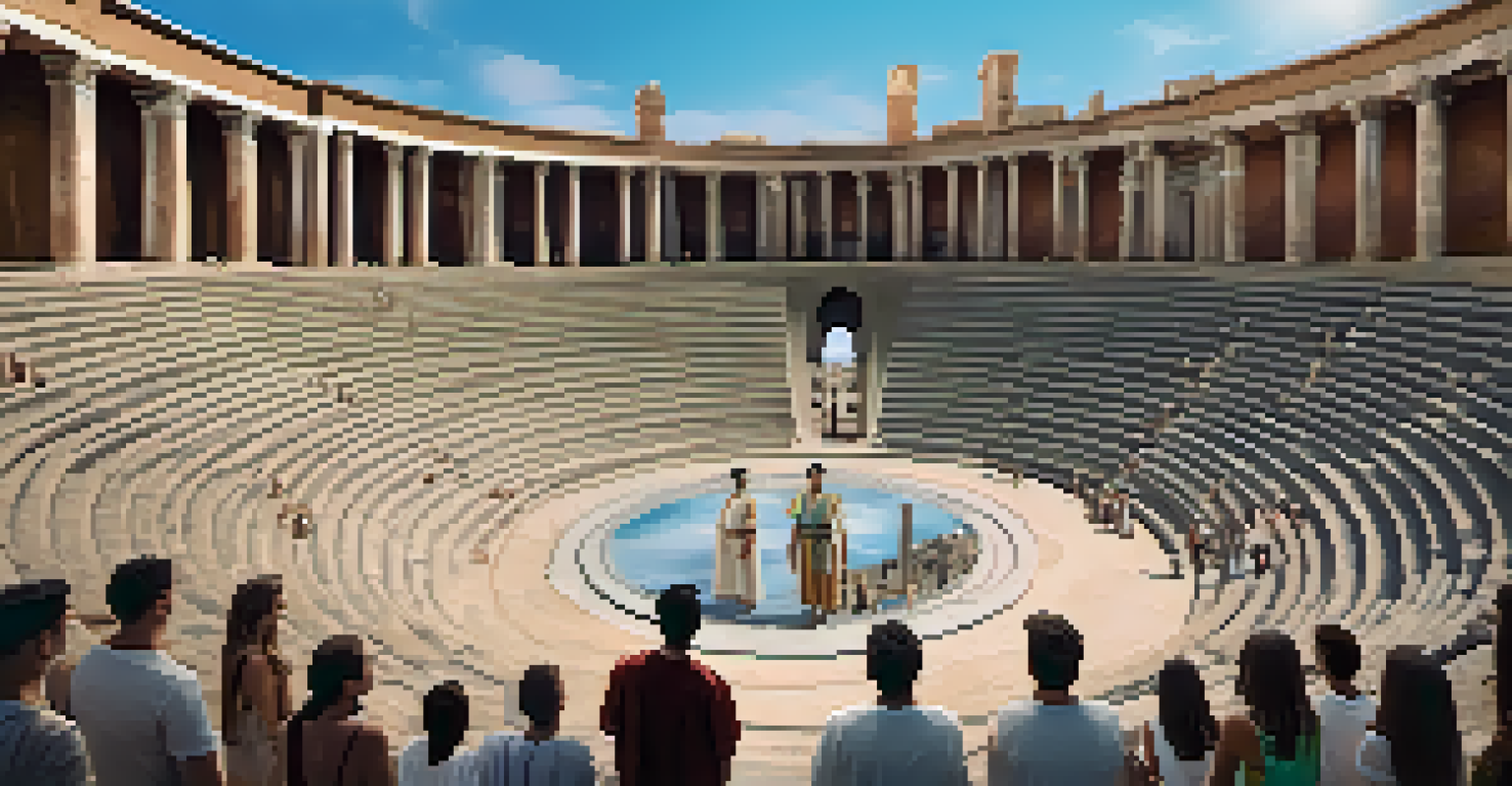The Role of Technology in Conserving Spain's Cultural Heritage

Understanding Spain's Rich Cultural Heritage
Spain boasts a vibrant tapestry of cultural heritage, from ancient architecture to diverse traditions. Landmarks like the Alhambra and the Sagrada Familia showcase the country's historic artistry. This cultural wealth is not just a treasure for locals but a global heritage that attracts millions of visitors each year.
Cultural heritage is the foundation of our identity and the essence of our existence.
However, as time progresses, many of these sites face threats from natural decay, pollution, and tourism. Understanding the importance of preserving this heritage is crucial for future generations. By safeguarding these sites, Spain can maintain its identity and continue to share its history with the world.
Efforts to protect this heritage have evolved over the years, leading to innovative solutions that blend tradition with modernity. The intersection of culture and technology has opened up exciting pathways for conservation, ensuring that Spain's legacy endures.
Role of Digital Documentation in Preservation
One of the most significant advancements in heritage preservation is digital documentation. Techniques such as 3D scanning and photogrammetry allow for the creation of detailed digital replicas of historical sites. This not only helps in monitoring the condition of these structures but also serves as a valuable resource for researchers and historians.

For instance, the digitization of the Cave of Altamira's paintings allows scholars to study and share this UNESCO World Heritage site without causing physical harm. These digital archives can also be used to educate the public, raising awareness about the importance of cultural preservation.
Cultural Heritage Needs Preservation
Spain's rich cultural heritage, exemplified by landmarks like the Alhambra, must be preserved to maintain its identity and share its history with future generations.
Moreover, during restoration projects, having these digital records ensures that the original designs and details are respected. This combination of technology and artistry helps maintain the integrity of Spain's cultural treasures.
Augmented Reality: A New Way to Experience Heritage
Augmented reality (AR) is revolutionizing the way we interact with cultural heritage. By overlaying digital information onto the real world, AR can enhance visitors' experiences at historical sites. Imagine walking through the ruins of an ancient Roman city and seeing reconstructions of what it once looked like right before your eyes.
We do not inherit the earth from our ancestors; we borrow it from our children.
In Spain, AR applications have been developed for landmarks such as the Roman Theatre of Mérida, allowing visitors to visualize performances that once took place there. This not only enriches the experience but also engages younger audiences who might be more inclined to connect with technology.
As people engage with their heritage in innovative ways, they develop a deeper appreciation for its significance. AR not only helps keep history alive but also fosters a sense of community and shared cultural identity.
The Impact of Social Media on Heritage Awareness
Social media platforms have become powerful tools for raising awareness about cultural heritage. Through photos, videos, and stories, users can share their experiences of Spain's historical sites, creating a global conversation around preservation. This newfound visibility encourages both locals and tourists to value and protect these treasures.
Campaigns on platforms like Instagram and Twitter have successfully highlighted endangered sites, prompting discussions on the importance of conservation efforts. Hashtags such as #SaveOurHeritage connect people from all walks of life, fostering a sense of responsibility to protect cultural legacies.
Technology Enhances Conservation Efforts
Innovative technologies like digital documentation and augmented reality are transforming heritage preservation, allowing for better monitoring and visitor engagement.
Moreover, social media allows organizations and governments to disseminate information and updates regarding preservation projects. This transparency builds trust and encourages community involvement, ensuring that the responsibility of preserving cultural heritage is a shared effort.
Innovative Conservation Technologies and Techniques
Recent advancements in technology have led to innovative conservation methods that significantly enhance preservation efforts. For instance, the use of drones equipped with high-resolution cameras allows for aerial surveys of historical sites. This technology provides invaluable data on the condition of structures that might be difficult to assess from the ground.
Additionally, conservation specialists are using laser cleaning techniques to remove pollutants from delicate surfaces without causing damage. Such methods are not only effective but also environmentally friendly, ensuring that the preservation process does not contribute to further decay.
These technologies represent a shift in how we approach conservation, emphasizing precision and care. As we continue to embrace new tools, the potential for preserving Spain's cultural heritage becomes brighter.
Community Involvement in Preservation Efforts
Community involvement plays a vital role in the preservation of cultural heritage. Local groups often organize initiatives that aim to restore and maintain historical sites. These grassroots efforts not only empower residents but also foster a sense of pride in their cultural legacy.
For example, volunteer programs have emerged where locals participate in restoration projects, learning about traditional techniques while actively contributing to the preservation of their heritage. This hands-on approach creates a deeper connection between the community and their history.
Community Engagement is Crucial
Local involvement in preservation initiatives fosters pride and ensures that cultural heritage remains a priority for future generations.
Moreover, educational workshops and events can teach younger generations about the importance of conservation. Engaging the community in these discussions ensures that cultural heritage remains a priority for future generations, nurturing a culture of stewardship and respect.
The Future of Technology in Heritage Conservation
The future of technology in conserving Spain's cultural heritage looks promising. As advancements continue to emerge, we can expect even more innovative solutions that enhance preservation efforts. From artificial intelligence to machine learning, these technologies have the potential to revolutionize how we protect and maintain historical sites.
Furthermore, collaboration between technologists, historians, and conservationists will be crucial in developing effective strategies. By working together, these experts can ensure that technology is used ethically and responsibly, prioritizing the cultural significance of each site.

Ultimately, the integration of technology in heritage conservation not only safeguards Spain's rich history but also inspires a global movement towards the protection of cultural legacies. As we look to the future, embracing these advancements can lead to a renewed appreciation for our shared past.